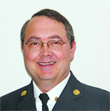
Features
Leadership
Cornerstone: Analyzing the art or science of leadership
As I am writing this, I am also putting the final touches on a presentation that and my friend Les Karpluk and I are invited to do at the Ontario Association of Fire Chiefs conference. The presentation, like the title of this column, is about whether leadership is an art or a science.
June 6, 2008
By Lyle Quan
 As I am writing this, I am also putting the final touches on a presentation that and my friend Les Karpluk and I are invited to do at the Ontario Association of Fire Chiefs conference. The presentation, like the title of this column, is about whether leadership is an art or a science.
As I am writing this, I am also putting the final touches on a presentation that and my friend Les Karpluk and I are invited to do at the Ontario Association of Fire Chiefs conference. The presentation, like the title of this column, is about whether leadership is an art or a science.
Les, who is the fire chief in Prince Albert, Sask., and I have been friends and classmates for several years and have discussed this question from many angles. Whether it was during our discussions while completing the emergency services degree program with Lakeland College or while we chatted via e-mail, we have always shared and compared our successes and challenges. Through all of this, we have noted that our problems weren’t unique to Ontario or Saskatchewan, rather they are universal. Because of this, sharing of our experiences and research (at the conference) would continue to support our commitment to the fire service. We are believers in sharing what we have learned and that’s how this opportunity to speak at the OAFC came about.
This year also marks another milestone in what I see as a great example of leadership and sharing in action. The OAFC has been working at removing the silos from our industry by bringing other professional groups into its annual conference. A few years ago, the Ontario Training Officers Association was invited to join the conference and this year, the Ontario Communicators Association is joining and reaping the benefits of sharing training and educational programs.
As noted in my November column, networking is one of the greatest strengths of the fire service. We share unselfishly our experiences and eagerly want to pass on our successes. So, kudos to those on the OAFC executive who have worked so hard to make this joint educational conference a reality.
As for the joint presentation that Les and I prepared on leadership, it is a culmination of the books and articles we have read, the seminars we have participated in and, of course, our personal experiences and beliefs. The presentation makes reference to a concept that is discussed in the book Flight of the Buffalo. The authors, James Belasco and Ralph Stayer, point out that one major reason some organizations fail is that their leadership style is more related to the buffalo mentality than the geese way of thinking.
Buffalo leadership
• One person in charge.
• The herd moves only when the leader moves.
• If the leader is killed the herd looses its direction and stands still until a new leader emerges.
Geese leadership
• Everyone knows where the team is going.
• They switch off and take the lead when necessary to lighten the load.
• There is constant and open communication.
So, is leadership an art or science? It is a combination of both. When dealing with people, tab A does not always fit into slot B. Therefore, as leaders, we need to educate ourselves to understand the personalities and generational gaps that exist within the fire service. Are you trying to understand your staff, their needs and values? If not, why not?
Leaders and managers need to look at the bigger picture and determine on which battlefield they want to plant their flag or when they should take a more supportive role. During the Korean War, while in the process of what appeared to be a retreating manoeuvre of his troops, General MacArthur was quoted as saying to the media, ”Retreat, hell, we’re just attacking from another direction.” This statement so aptly epitomizes the ability of this leader to see that it’s all in how you look at a challenge that makes your efforts a success or a failure. Be flexible, readjust and tackle the problem from a different angle. It’s not about winning or losing, it’s about which solution best supports the vision and values of the organization and the community it serves.
So, is leadership an art or science? Let’s just say that a true leader is someone who can see when dealing with people that there is an art for appreciating that we are all different, yet when dealing with the hard-core issues, the science of assimilating, evaluating and reaching a conclusion is also a requirement.
The two books mentioned here can be obtained through Amazon.com and Chapters. (Flight of the Buffalo by James Belasco and Ralph Stayer (1993), published by Warner books. A Tale of Two Employees by Dr. Chris Bart (2002), published by Corporate Missions Inc.)
Lyle Quan is the deputy fire chief – administration with the Guelph Fire Department in Ontario. A 27-year veteran of emergency services, he is a graduate of Lakeland College’s Bachelor of Applied Business: Emergency Services and Dalhousie University’s Fire Service Leadership and Administration Programs. Lyle is an Associate Instructor for the Ontario Fire College, Lakeland College and Dalhousie University. E-mail: thequans@sympatico.ca
Print this page
Advertisement
- Leadership Forum: Walking the talk to effective communication
- Volunteer Vision: Obstacles in maintaining a volunteer department